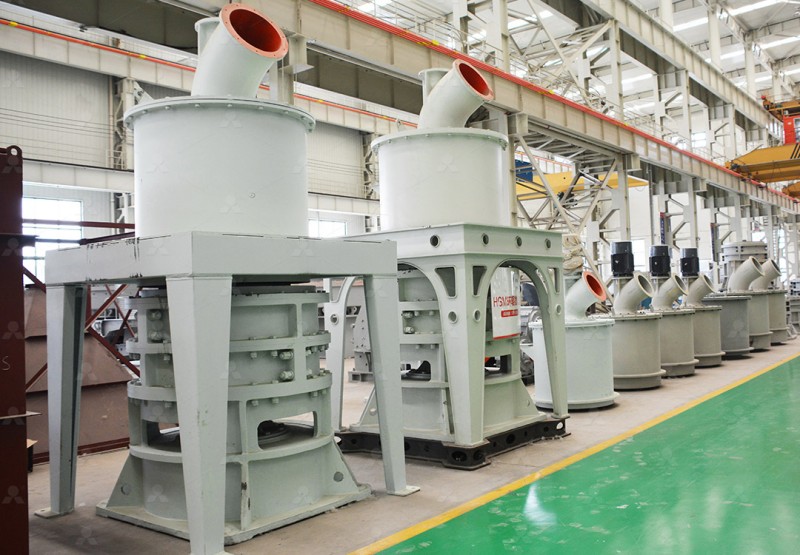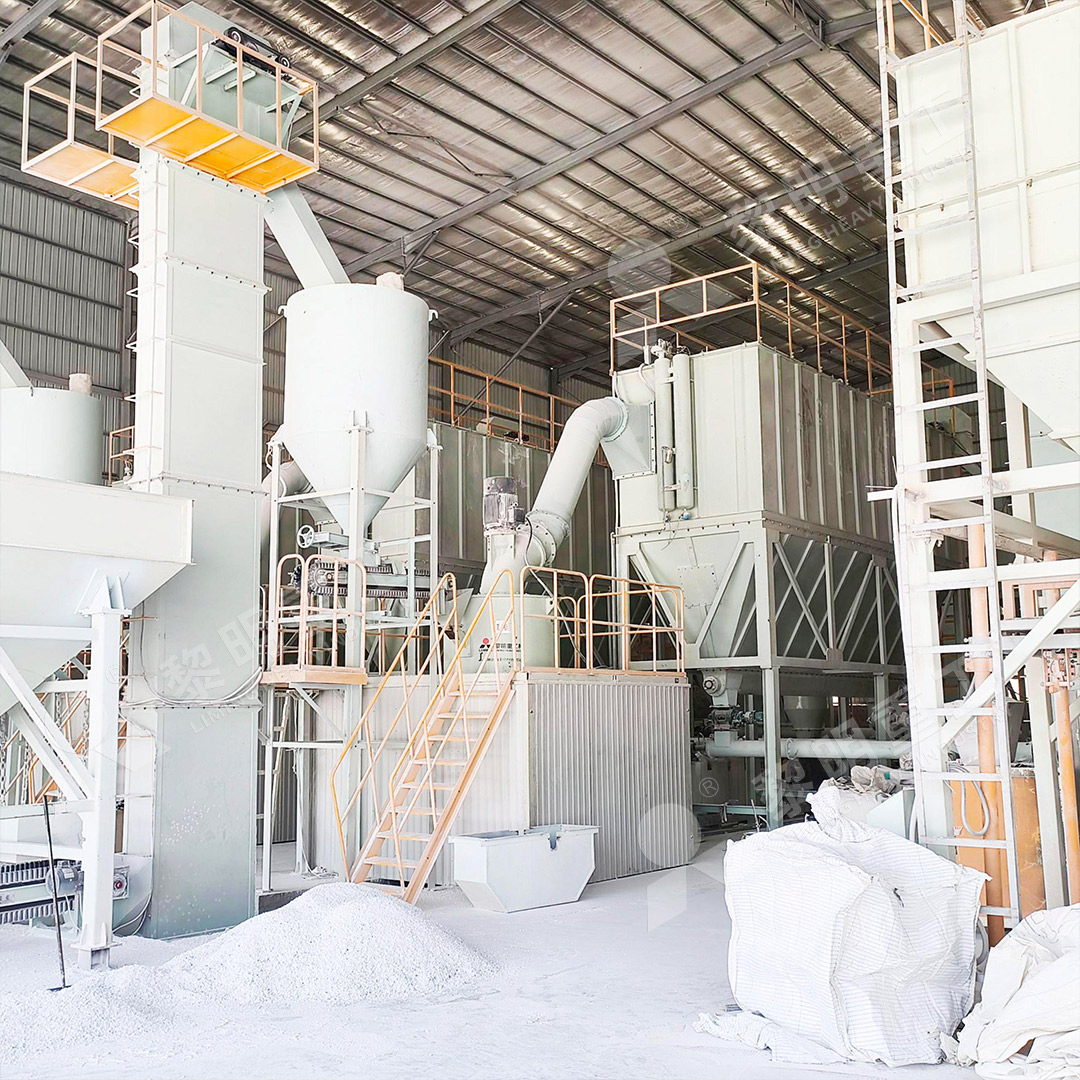Wollastonite Pendulum Mill: Efficient Grinding for Industrial Applications
Wollastonite Pendulum Mill: Efficient Grinding for Industrial Applications
In the realm of industrial mineral processing, the quest for efficient, reliable grinding solutions remains paramount. Among the various minerals that demand precise particle size reduction, wollastonite stands out for its unique properties and diverse applications. The processing of this calcium inosilicate mineral requires specialized equipment capable of delivering consistent fineness while maintaining operational efficiency.
Traditional grinding methods often fall short when dealing with wollastonite’s acicular crystal structure. The needle-like morphology of wollastonite particles necessitates careful handling during size reduction to preserve aspect ratios critical for many industrial applications. This is where advanced pendulum mill technology demonstrates its superiority, offering controlled grinding environments that maintain particle integrity while achieving desired fineness levels.

The Engineering Behind Modern Pendulum Mills
Contemporary pendulum mill designs have evolved significantly from their predecessors. Modern iterations incorporate sophisticated grinding curves, precision balancing, and advanced material handling systems that collectively enhance performance while reducing energy consumption. The pendulum principle itself—where grinding rollers swing outward due to centrifugal force—creates an optimal grinding environment where material is progressively reduced between rollers and grinding rings.
What sets apart today’s advanced pendulum mills is their integration of digital control systems, allowing operators to fine-tune parameters in real-time. This level of control ensures consistent product quality batch after batch, a critical requirement for industries where material specifications must meet exacting standards.
MW Ultrafine Grinding Mill: A Superior Solution for Wollastonite Processing
For operations requiring ultra-fine wollastonite powders, the MW Ultrafine Grinding Mill represents a technological leap forward. Engineered specifically for customers needing to produce ultra-fine powder, this machine demonstrates exceptional capabilities when processing wollastonite and similar minerals.
The MW series stands out with its impressive operational parameters: handling input sizes up to 20 mm with capacities ranging from 0.5 to 25 tons per hour. More importantly, it achieves fineness levels between 325-2500 meshes, making it ideally suited for high-value wollastonite applications where precise particle size distribution is crucial.

Several design innovations contribute to the MW mill’s superior performance. The newly designed grinding curves of the grinding roller and ring significantly enhance grinding efficiency. Comparative analyses reveal that with identical fineness and power consumption, the MW mill’s production capacity exceeds that of jet mills and stirred mills by 40%, while doubling the output of traditional ball mills. Remarkably, system energy consumption registers at just 30% of comparable jet milling operations.
Operational Advantages in Industrial Settings
The MW Ultrafine Grinding Mill incorporates thoughtful engineering solutions that address common industrial challenges. The absence of rolling bearings and screws within the grinding chamber eliminates concerns about bearing damage or failures caused by loose fasteners. External lubrication systems enable maintenance without shutdowns, supporting continuous 24-hour production cycles essential for modern manufacturing operations.
Environmental considerations are thoroughly addressed through integrated pulse dust collection and noise reduction systems. The efficient pulse dust collector ensures dust-free operation across the entire milling system, while silencers and noise elimination rooms maintain workplace noise at acceptable levels. These features collectively ensure compliance with stringent environmental protection standards.
LUM Ultrafine Vertical Grinding Mill: Complementary Technology
For operations requiring alternative grinding configurations, the LUM Ultrafine Vertical Grinding Mill offers another sophisticated solution. With an input size capacity of 0-10 mm and throughput of 5-18 tph, this mill integrates the latest grinding roller technology from Taiwan with German powder separation expertise.
The LUM mill’s unique roller shell and lining plate grinding curve design facilitates easier material layer formation, enabling high finished product rates through single-pass powder milling. This design significantly enhances grinding efficiency while improving the whiteness and cleanliness of finished products—particularly valuable attributes for wollastonite destined for premium applications.

Double position-limiting technology ensures operational stability by preventing destructive impacts between grinding components during unexpected vibration events. The reversible structure design simplifies maintenance procedures, allowing operators to easily move grinding rollers out of the mill body for inspection and component replacement.
Application-Specific Considerations
When processing wollastonite for different industrial sectors, the choice between pendulum and vertical grinding technologies depends on specific product requirements. The needle-like structure of wollastonite makes it particularly valuable as a functional filler in plastics, ceramics, paints, and construction materials. Each application demands different particle size distributions and aspect ratio preservation, which these advanced mills can deliver through precise control systems.
The cage-type powder selector in the MW mill, incorporating German technology, provides exceptional separation precision. Configurable multi-head selectors allow customization based on yield, fineness, and sieving rate requirements, while achieving screening rates of d97≤5μm in a single pass.
Frequently Asked Questions
What makes the MW Ultrafine Grinding Mill suitable for wollastonite processing?
The MW mill’s ability to produce ultra-fine powders (325-2500 meshes) while preserving particle morphology makes it ideal for wollastonite. Its specialized grinding curves and precision separation systems maintain the acicular structure that gives wollastonite its reinforcing properties in composite materials.
How does the energy consumption compare to traditional grinding methods?
The MW Ultrafine Grinding Mill demonstrates remarkable energy efficiency, consuming only 30% of the energy required by jet mills for equivalent output. Compared to ball mills, it doubles production capacity while reducing specific energy consumption per ton of processed material.
Can these mills handle other industrial minerals besides wollastonite?
Absolutely. Both the MW and LUM mills effectively process various industrial minerals including limestone, calcite, dolomite, gypsum, barite, marble, talc, and coal powder. Their versatile design accommodates materials across hardness scales while maintaining consistent performance.
What maintenance advantages do these modern grinding mills offer?
The absence of internal rolling bearings and screws in the grinding chamber eliminates common failure points. External lubrication systems enable maintenance without production stoppages. For the LUM mill, the reversible structure allows easy roller removal for inspection and component replacement, significantly reducing downtime.
How do these mills address environmental compliance?
Integrated pulse dust collectors ensure virtually dust-free operation, while silencers and noise elimination rooms maintain workplace noise within regulatory limits. The closed-system designs prevent material escape, and negative pressure operation contains particulates effectively.
